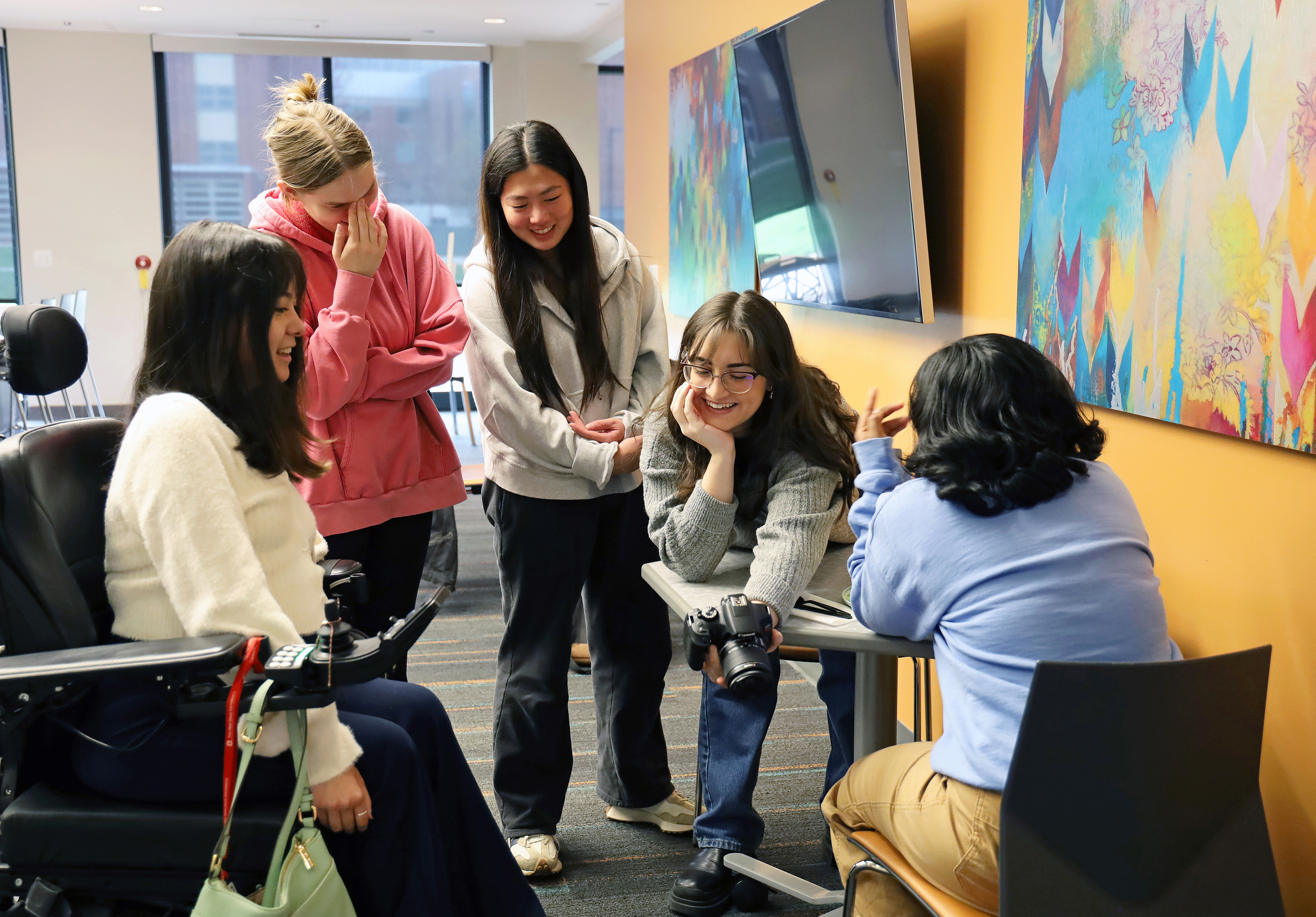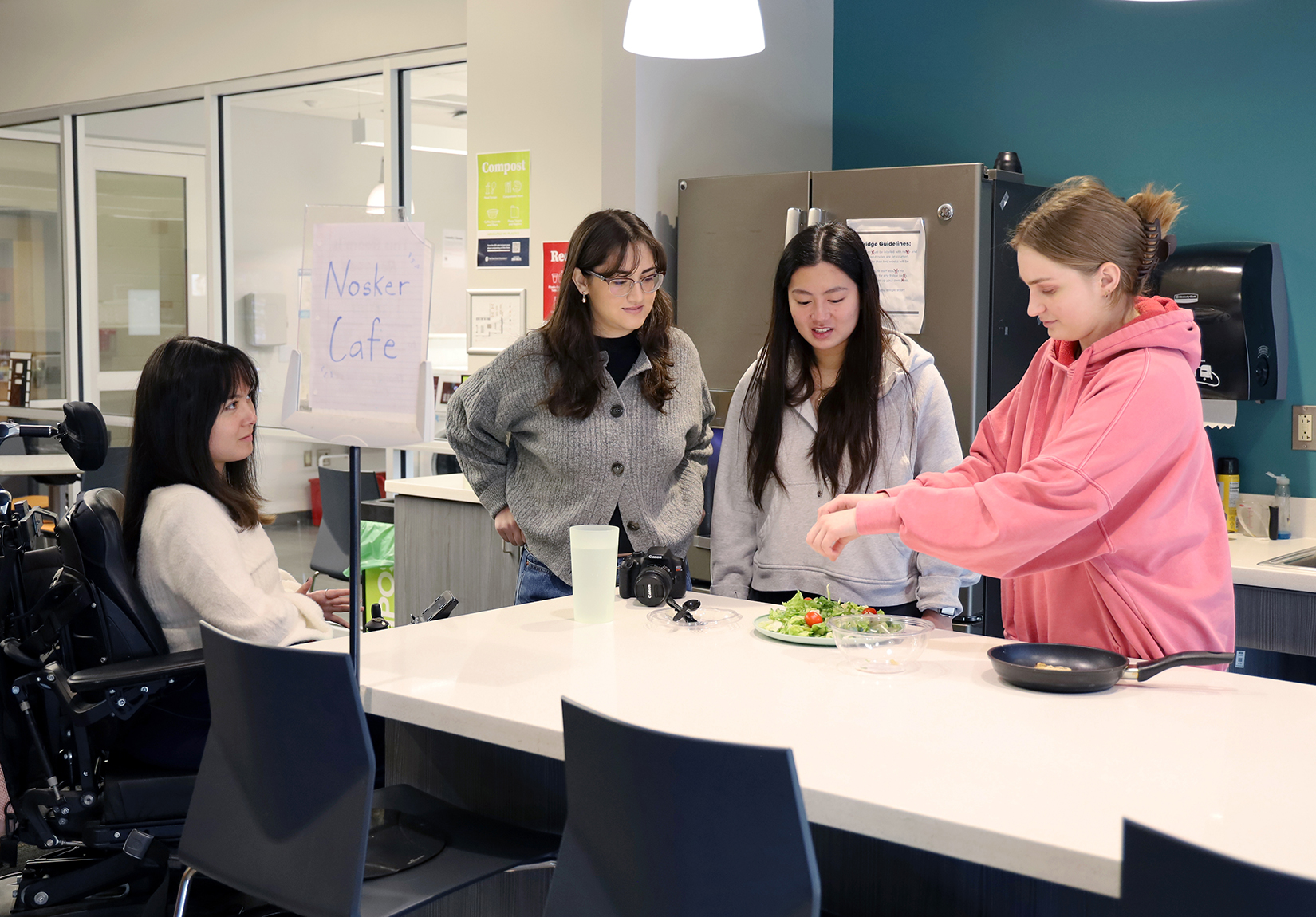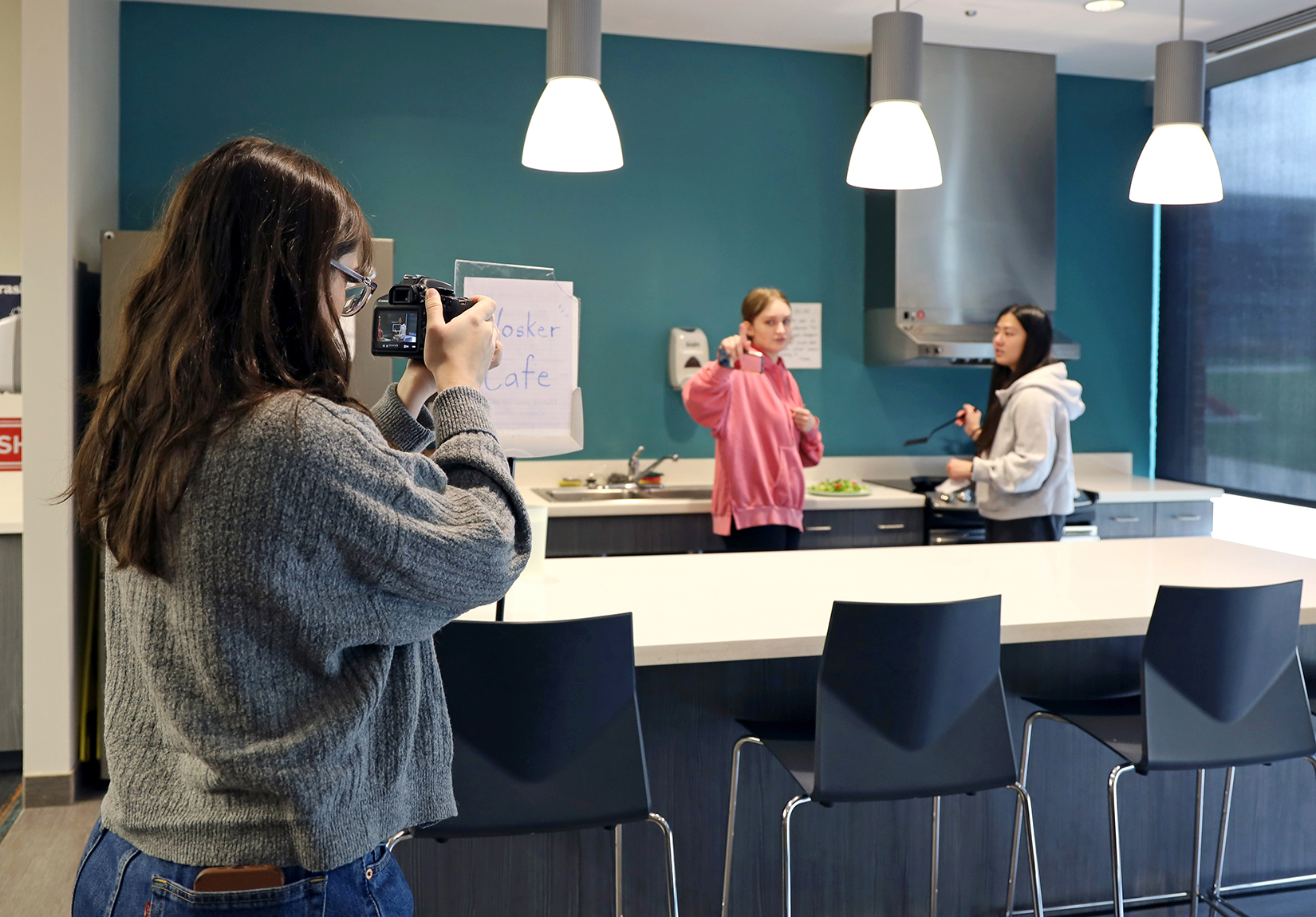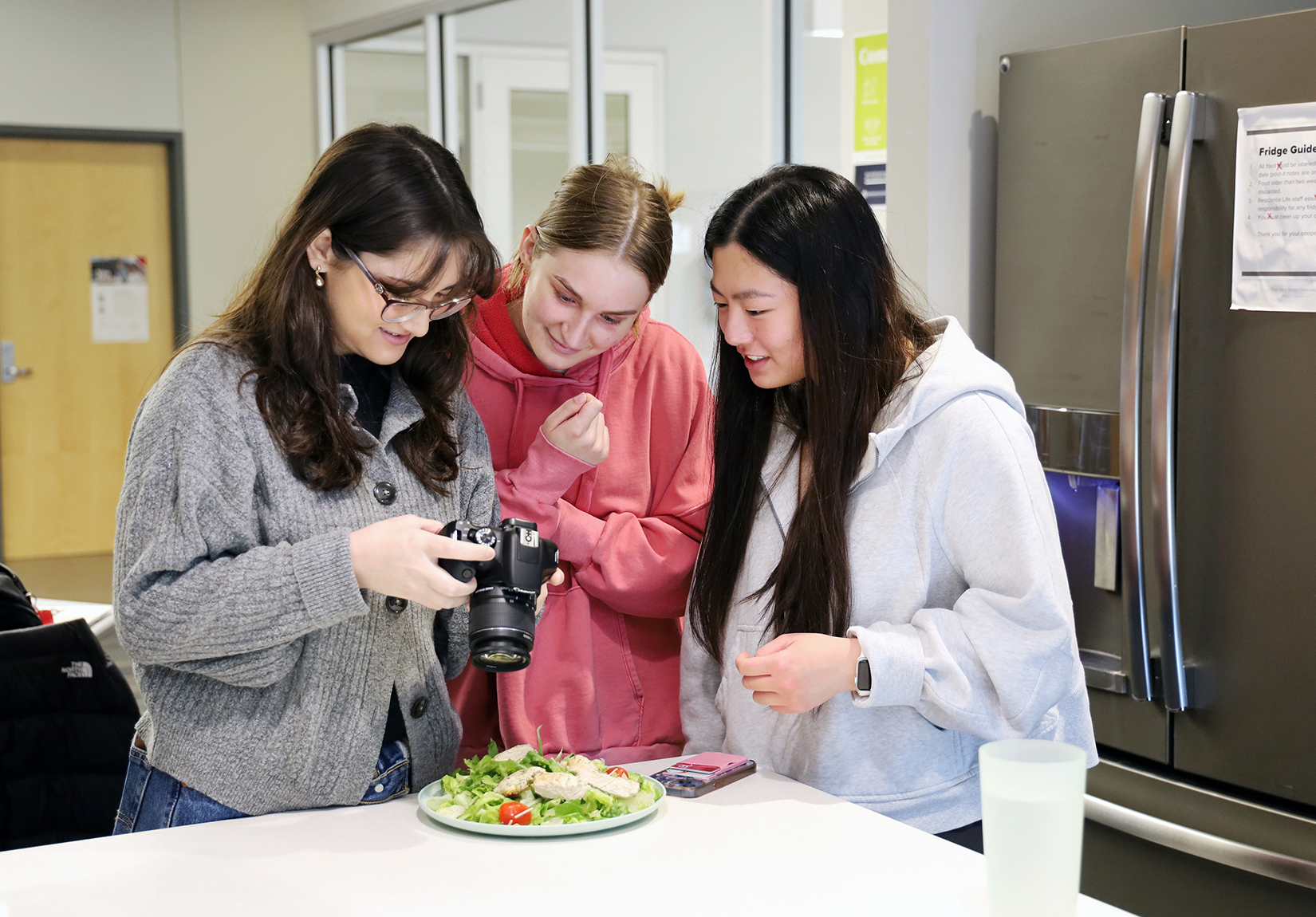Lights, camera, action: Students explore environmental health themes
Video project challenges undergrads to act out classroom concepts
By Kristen Mitchell

While whipping up a chicken salad in the Nosker House kitchen, first-year student Jade Davis and her classmates can’t stop breaking character. They’ve set the scene: an unsuspecting patron takes a risk on a new restaurant just to get food poisoning—in the middle of a big day of studying, no less.
The group wrote the script and cast the roles, but they’d be the first to admit acting isn’t part of their 10-year plan. As students in PUBHEHS 3310: Current Issues in Global Environmental Health, they were tasked with creating a short film or skit to highlight one of 18 topics they learned about in the classroom.
“It’s really easy to just put together a presentation and just talk about what the topic means, but that’s not the best learning experience,” said Associate Professor Paul Rosile who teaches the class. “The creative video takes a lot of critical thinking, and it really makes them think about how they can creatively represent environmental health concepts and topics with their storyline, acting and dialogue.”
As good public health educators and practitioners know well, the field is only effective when its importance is clearly communicated – when complex concepts are distilled into easy-to-digest messages.
Davis's group chose to focus on food safety because they thought it would be something they could act out with resources at their disposal — access to a residence hall kitchen and a pre-packaged salad from campus dining. The class shed light on public health work that is invisible to most of the people it protects.
“I was introduced to so many topics that could be health hazards that I had never even thought of,” Davis said. “Like the food safety stuff... I didn’t know that much went into keeping food safe and keeping people safe. That alone has opened my eyes.”
Davis recently declared her major in public health with an environmental health specialization while taking PUBHEHS 3310, an online general education course primarily taken by first- and second-year undergraduates.
With more than 100 enrollees during the fall and spring semesters, Rosile knows not every student will walk away deciding to specialize in environmental health. Regardless of their ultimate academic destination, he wants them to leave with more awareness about how their communities are impacted by threats such as hazardous waste, and air and water pollution, and to be prepared to share that knowledge.
Rosile and Margaret DiMaria, the college’s structural design coordinator, have been tinkering with the creative assignment over five semesters, figuring out how to best leverage Ohio State’s virtual learning tools to provide students with a quality groupwork experience. Students use Teams to meet during synchronous sessions, which affords Rosile the opportunity to pop into breakout rooms and meet with each group.
The course is a “shining example of online instruction done thoughtfully,” DiMaria said.
“Paul is very effective helping students connect concepts to their everyday life. It allows students to see how public health affects them personally,” she said. “I see a lot of lightbulbs go off in this course.”
That was junior Stella Wineman’s experience. Last fall her group created a video with parallel storylines focused on two different families — one struggling with food insecurity and another who did not. While one family faced greater health challenges and had a hard time getting to a grocery store and accessing healthy foods, the other experienced less friction in their daily lives.
“We wanted to show the true disparity between two different households,” she said. “You’re able to see privileges that families who do not experience food insecurity have, which if you haven’t experienced food insecurity, can be eye opening.”
Wineman, who is majoring in international affairs and diplomacy and minoring in global public health, said she still notices when she drives through a community and hasn’t seen a grocery store in a while, even months after completing the course.
"It enlightened me about the places I’m going to and the things I’m seeing around me,” she said. “It makes me think about it a little bit differently.”


